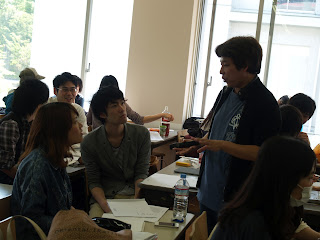An
important notion in The Structure of Scientific Revolution is
that a paradigm shift is born from not necessarily the accumulating
new facts that have never been tested before, but from the
reconstruction of existing concepts. For instance Niklas Luhmann
identifies does not change the word: communication in his Social
Systems Theory although his definition of it is much more
emphasized and detailed than the usual definition. Luhmann did not
create something nonexistent, but changed existent intellectual
circumstances.
Like
so, a paradigm shift is the reconstruction or the reexamination of
the current intellect. That is why a scientific revolution did not
only occur in the Copernican Revolution in the 16th and
the 17th century, but has been occurring continuously as
long as science was existent. We tend think that what is written in
science textbooks are unarguable, but in reality, scientific research
had, and currently has, many inconsistencies. These inconsistencies
leave possibilities of what can become paradigm shifts.
So
our question was: is paradigm shift a progression, or an evolution?
We define progression as an improvement, where positive feedback
occurs. On the other hand, evolution has more of a “conversion”
nuance, where the change may not always be for the greater good. It
is definite that many paradigm shifts occur, but we have yet to know
if they are either improvements, or just mere conversion, or change.
What do you think?
The
next notion we focused on was as Kuhn suggests, and as history
suggests, paradigm shifts, or scientific revolutions are triggered
not usually by experienced “experts” in each field, but
surprisingly by new comers that have little recognition. This is
because the new comers approach existing intellect, which have become
traditional to experts, from their philosophies of science. Because
new comers do not use traditional approaches, they are more capable
of finding holes in common theory, causing paradigm shifts, compared
to the bug-fixing-like frontier research experts do.
Finally,
we discussed on how to drive our research in SFC as new comers in
each field. As all students taking this course are undergraduates, we
have very limited time in order to produce new insights in science,
design, etc. For new comers like us, while we cannot revolutionize
preexisting intellect, we can change the tools to give new insights.
For example, when using the microscope, we see new, different
insights and data not because we changed the subject we see, but
because we changed how we saw it. This is the significance to letting
us, undergraduates become researchers, innovate the intellectual
frontier.
For
the second part of the class, we studied Deb Roy in his famous
presentation: The birth of a word, in order to see ways to how
to see preexisting data from a completely new perspective, and
innovate the intellectual frontier. Roy saw the usual family life in
a house, and how the baby learned and acquired words by taking the
world’s longest home-video ever, and tracking every word and every
movement of every person. Although we may not have the ability or the
resources to do something as creative as Deb Roy, this presentation
gave us great implication for our research.
We
also viewed some more videos students have filmed and edited. Keep in
mind that most of them experienced editing and filming videos for the
first time. We hope this experience gives us insights on new ways to
view preexisting subjects.
References
Thomas
S. Kuhn, The Structure of Scientific Revolution, University of
Chicago Press, 1962
Freeman
Dyson, Imagined Worlds, Harvard University Press, 1997









































.jpeg)






